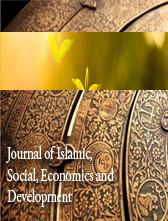INCREASING URBAN VULNERABILITY IN MALAYSIA: A MYTH OR REALITY?
Abstract
Malaysia urbanized rapidly, from 35% urban population in 1980 to 75% in 2015. Fueled by search for better quality of life, the increasing urban population often outstripped existing infrastructure and services provisions. Exacerbating this is the growing number of vulnerable, those not poor by official poverty definition but face risks that make them highly likely to be poor. Thus, the objective of this study is to investigate the impacts of socioeconomic outcomes for the urban vulnerable population. Using data from the 2015 National Health and Morbidity Survey, we employ the multinomial Probit regression to establish if the socioeconomic and lifestyle factors, including living in urban areas contribute to one’s earnings. Findings show that demographic and socioeconomic factors are all important income determinants. More importantly, the urban vulnerable groups are worse off in terms of average household income, compared to the total vulnerable population. Additionally, socioeconomic variables like education and occupation are essential in improving incomes and inducing upward social mobility.













